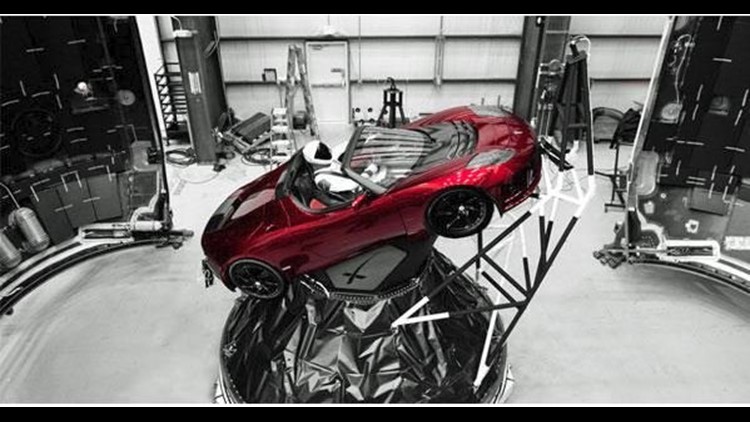See the video of the launch, here.
SpaceX successfully launched its Falcon Heavy rocket on its maiden mission Tuesday afternoon. Made up of three side-by-side Falcon 9 first stages and an upper stage carrying a cherry red Tesla Roadster, the Falcon Heavy generates 4.7 million pounds of thrust at launch, more powerful than any other rocket in current use.
The rocket lifted off at 3:45 p.m. EST from Kennedy Space Center’s historic launch pad 39A. The launch, originally scheduled for 1:30 p.m., was delayed for several hours due to wind conditions.
The day before launch, SpaceX founder Elon Musk put the odds of a successful flight at somewhere between 50 percent and 70 percent.
“I’m looking forward to it. It’s either going to be an exciting success or an exciting failure. One big boom! I’d say tune in, it’s going to be worth your time,” Musk told CBS News.
SpaceX Falcon Heavy payload
While this is just a test launch, the Falcon Heavy carried a payload of Elon Musk’s midnight cherry Tesla Roadster, playing David Bowie’s “Space Oddity” and carrying a dummy pilot dubbed “Starman.”
“I love the thought of a car drifting apparently endlessly through space and perhaps being discovered by an alien race millions of years in the future,” Musk tweeted late last year.
Future versions of the Falcon Heavy could someday be used to launch missions to the moon or Mars.
SpaceX’s Falcon Heavy, the world’s most powerful rocket, thundered to life and shot away from Florida Tuesday on the power of 27 engines and nearly 5 million pounds of thrust, kicking off a spectacular maiden flight to send founder Elon Musk’s cherry red Tesla Roadster on a “just for fun” journey beyond the orbit of Mars.
It was easily the loudest and possibly most dramatic launch from Florida’s “Space Coast” since NASA’s space shuttle was retired in 2011 with the Falcon Heavy, made up of three strapped-together core stages powered by nine engines each, putting on a dazzling show for tourists and area residents jamming nearby roads and beaches.
Spectacular as it was, the launching was just the appetizer for a long-awaited test flight. Eight minutes after the rocket took off, two of the three Falcon 9 core stages that helped power the vehicle out of the lower atmosphere made rocket-powered descents to side-by-side touchdowns at the Cape Canaveral Air Force Station, generating thunderous sonic booms as they slowed for landing.
Recovering rocket stages was impressive in its own right, but it was a secondary test objective. The primary goal was to prove the rocket’s ability to boost heavy payloads into space.
While the Tesla on board for the rocket’s first test flight tipped the scales at a relatively modest one ton or thereabouts, the Heavy has the ability to boost nearly 140,000 pounds to low-Earth orbit and more than 37,000 pounds to Earth-escape trajectories to Mars.
NASA is currently building an even more powerful rocket known as the Space Launch System, or SLS, that will generate 8.8 million pounds of thrust in its initial configuration and up to 11.9 million pounds in a follow-on cargo variant. The initial version will be able to boost more than 50,000 pounds to Earth-escape velocity.
But the SLS is not expected to fly until late 2019 or later. Until then, the Falcon Heavy will be the world’s most powerful rocket, offering a relatively low-cost option for getting heavy payloads into space for NASA, the Department of Defense and commercial satellite operators.
Read more, here.



